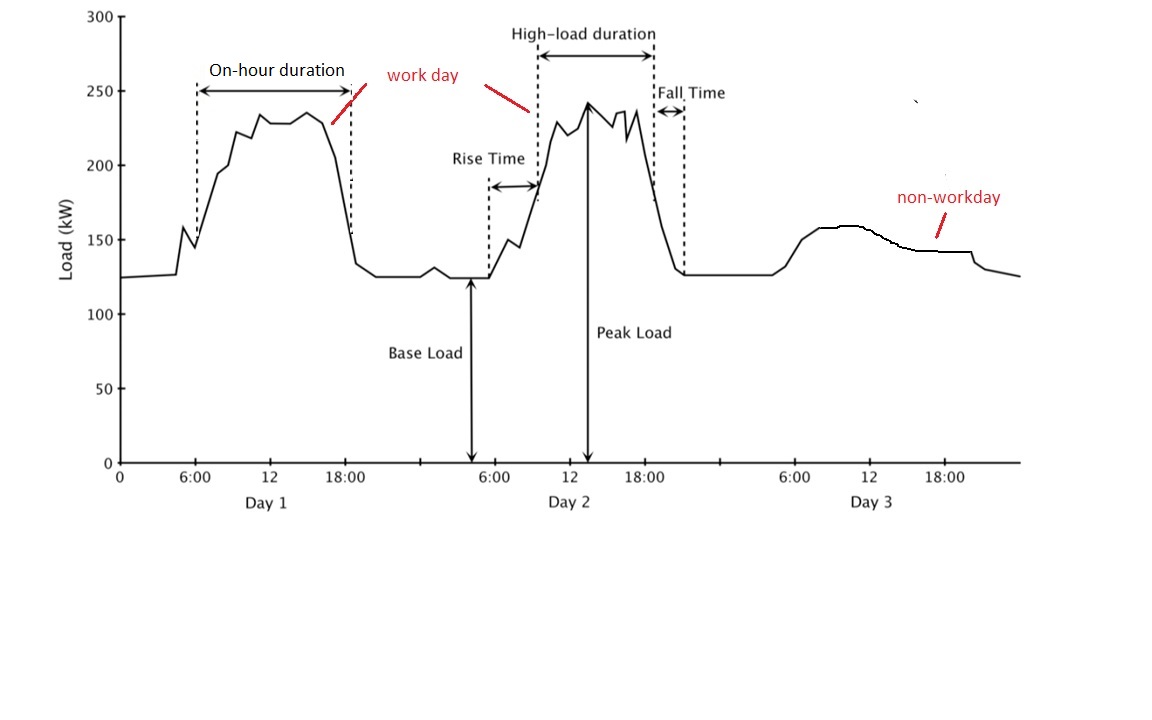 Project Title
Project Title
Small and Medium Sized Commercial Building Natural Gas and Electric Load Shape Benchmarks
Project Number ET16PGE8931 Organization PG&E End-use Other, Whole Building, Water Heating/DHW/HPWH, HVAC, Lighting Sector Commercial Project Year(s) 2015 - 2016Xuan Luo,[1] Tianzhen Hong,1 Mary Ann Piette,1 Yixing Chen1
Building Technology and Urban Systems Division
Lawrence Berkeley National Laboratory
This research developed load shape benchmarking using the energy use data of 2,353 small- and medium-sized commercial buildings in California. The load shape benchmarking is a useful tool to help building owners and stakeholders understand how energy is consumed during the 24-hour period of different days in different seasons of the year, and to identify low-cost measures to improve the operational efficiency of buildings to reduce energy use and cost. Lawrence Berkeley National Laboratory (LBNL) project staff received the building meters' recorded electricity use in 15-minute intervals and gas use on a monthly basis. After cleaning the raw data, there were 1,907 buildings with valid data; a subset of 228 buildings also had monthly natural gas use data.
LBNL assessed the energy use time series for each building, and analyzed load shape in tandem with building characteristics such as building size and building type. Project staff grouped the buildings into categories; for example, there are four building categories: small office buildings, small retail buildings, medium office buildings, and medium retail buildings. Researchers then determined statistical distributions of the load shape parameters and the clustered representative load patterns for each category of buildings.
Using this methodology, researchers developed a number of benchmarking metrics measuring different aspects of the building operation performance, such as the peak-base load ratio, the number of hours a building is "on" (on-hour duration), and the workday/non-workday load ratio. Specifically, the statistical load shape parameters measure whether the building is fully shut down during non-operation hours and non-working days, while the normalized load curve reveals the detailed load shape features during working hours, such as the load rise time and fall time.
Users can benchmark their building's operational performance by comparing the load shape against peer buildings in the database. This comparison could highlight opportunities for operational improvements and energy retrofits, some of which may be low- or no-cost.
Researchers have incorporated the load shape benchmarks as one element of the Commercial Building Energy Saver (CBES), part of the Small and Medium Building (SMB) Efficiency Toolkit [1]. CBES provides energy benchmarking and three levels of energy efficiency retrofit analysis for small and medium building owners, based on customer goals, data availability, and level of user experience. CBES is freely available through a web portal at cbes.lbl.gov.
The analytical techniques are generic and flexible, easily expansible to add future datasets of other building types. This approach could also be ported to utility service areas to capture energy savings.
Contact: THong@lbl.gov
Link to report: cbes.lbl.gov
[1] E. O. Lawrence Berkeley National Laboratory
